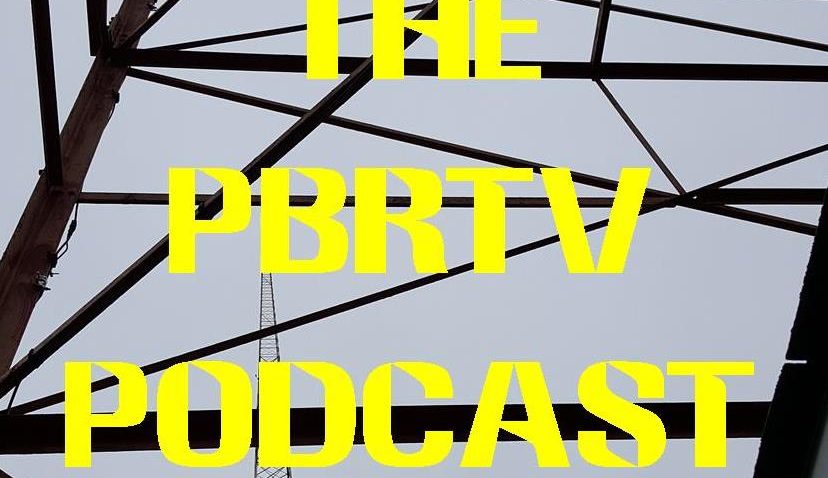Battery not included
March 10, 2008Pittsburgh-based Westinghouse Electric Corp. was one of the storied names in the radio business, of course. The company generally gets credit for operating the world’s first commercial radio broadcasting station (hint: it started with a “K”) and Westinghouse helped fuel the radio “craze” of the 1920s by building hundreds of thousands of inexpensive radios at its factory in East Pittsburgh, under the present-day Westinghouse Bridge.
At its height, Westinghouse was a worthy foe for General Electric Co., matching the bigger New York firm product for product in every avenue from light bulbs to household appliances to elevators to generating equipment.
By the 1950s, it was possible to live in a house with a Westinghouse electric range; Westinghouse washer and dryer, or “Laundromat” (the word was originally a Westinghouse trademark); Westinghouse radio and TV; and kitchen cabinets made of Westinghouse “Micarta.” And all of the appliances might be running on electricity generated by Westinghouse turbines and transmitted through Westinghouse circuit breakers and relays.

. . .
Yet despite Westinghouse’s technical expertise, it seemed to struggle at marketing consumer goods. Perhaps that’s because Westinghouse’s development efforts were focused on more serious military and industrial endeavors, like the first nuclear submarines and nuclear power plants.
Although Westinghouse scored an important consumer coup in 1953 when it brought the first successful “compatible” color TV to market, the technology was licensed from RCA. By the 1960s, there were few novel features that made a Westinghouse TV or radio a “must-have,” and Westinghouse was trying to compete solely on the basis of low price.
Its radios and televisions became increasingly “chintzy” as the company cut costs. Eventually most Westinghouse audio and video products were being imported from Japan and Hong Kong, and in 1974, the company “pulled the plug” on its radio and TV manufacturing division. The large appliance division — making washers, dryers, ranges and refrigerators — was sold to White Consolidated Industries, which renamed it “White-Westinghouse.”

. . .
That wasn’t the end of Westinghouse’s involvement in broadcasting, of course. The corporation’s Westinghouse Broadcasting Co. division continued to operate “Group W” radio and TV stations, produced syndicated TV shows (including The Mike Douglas Show), and developed cable TV and satellite networks.
In fact, all of those broadcasting efforts helped lead to the demise of the original Westinghouse Electric Corp. as a Pittsburgh institution. In 1995, it acquired CBS Inc. for $5.4 billion in cash.
Within two years, Westinghouse Electric’s board of directors had sold off most of the corporation’s non-broadcasting properties, moved the corporate headquarters to New York City, and renamed the surviving entity “CBS Corp.,” breaking the hearts of Pittsburghers and thousands of Westinghouse employees and retirees.
The current Westinghouse Electric Company, based in Monroeville, is a small spinoff of the original Westinghouse Electric Corp., and is now a wholly owned subsidiary of Japan’s Toshiba Corp.

. . .
Though the original Westinghouse Electric Corp. stopped making consumer goods in the 1980s when its light bulb division was sold to Philips, you can again buy light bulbs marked with the Westinghouse brand, along with digital TVs, refrigerators and other appliances.
But they’re not made by Westinghouse, and they have no connection with Pittsburgh. The Westinghouse “circle-W” trademark is still owned by CBS, and is licensed to various manufacturers. For a fee, they’re allowed to sell their products as “Westinghouse” brand merchandise.
Practically all of the Westinghouse items sold today are imported from China, some of them by a Philadelphia company that was originally known as Angelo Brothers Corp. It recently changed its name to Westinghouse Lighting Corp.

. . .
 There’s no copyright or patent date on this pocket-size AM radio, but it appears to be from the early 1970s, not long before the original Westinghouse Electric Corp. got out of the radio and TV manufacturing business.
There’s no copyright or patent date on this pocket-size AM radio, but it appears to be from the early 1970s, not long before the original Westinghouse Electric Corp. got out of the radio and TV manufacturing business.
There’s also no price, but I did find a 1970 ad for Boscov’s Department Stores that lists a similar “Westinghouse pocket radio” for $4.44. A quick calculation at the U.S. Bureau of Labor Statistics website indicates that’s roughly $24 in 2008 money.
That seems like a lot of money for a radio that only gets AM and only has one control (volume).
It would be worth a lot more, of course, if it would still actually receive what was on the radio in 1970 … Bob Prince and Nellie King calling Pirates games on KDKA … Chuck Brinkman, Jon Summers and Jim Quinn on KQV … the beginning of the Steelers’ Chuck Noll era on WTAE … country music on WEEP …
Oops! That’s a nostalgia fix for another time!
Monday Morning Nostalgia Fix was out sick last week. (Don’t worry, our mom wrote Eric a note.)
We’re back today, and we’ve got something a little bit different. Usually MMNF focuses on programming or personalities, but neither does much good if the audience doesn’t have a receiver.
And we’re betting that a lot of PBRTV readers had a little transistor radio like this new, mint condition Westinghouse we picked up at a swap meet last month.

Maybe yours was an Easter or Passover gift, or maybe you bought one for yourself with your paper-route or babysitting money.
Either way, if you were a kid in the ’60s or ’70s, chances are you carried an inexpensive radio like this one.

